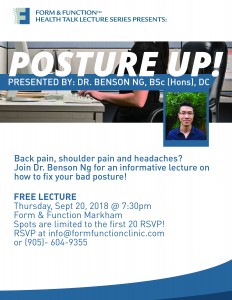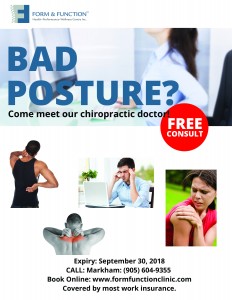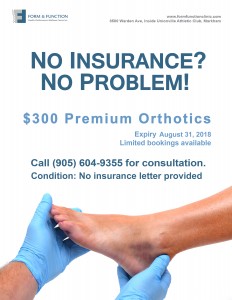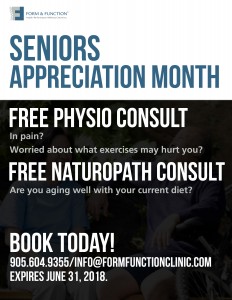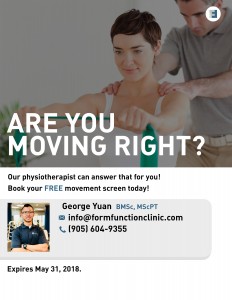Markham Location – News & Announcements
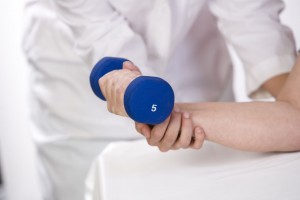
Our body is meant to move, not sitting behind a desk for 8 hours a day. When your body doesn’t move, the muscles are kept at one static length, and slowly looses their elastic property. Years of this can contribute to many muscle aches and pains, and also increasing the risk of injuries as the muscles are more susceptable to bring sprained. One great example is the lower back sprain when moving furniture.
While sitting is unavoidable, you can still do something about it. Try to get up and move your body, from neck to shoulder to back to legs and arms so your muscles maintain their elasticity.
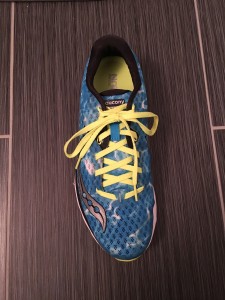
Do you find your heels slipping out of your shoes when you’re walking or running? Using a different lacing technique can help solve this problem.
- Tie your laces in a normal criss-cross pattern up until the second to last hole
- Keeping your lace on the same side, weave it into the last hole leaving a loose loop
- Take the end of the lace and weave it into the opposite side’s loop
- Pull the laces tightly and tie a knot like normal
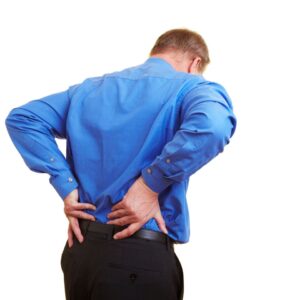
Did I say lumbar lordosis again? Forgive me, but this is just as important in sitting as it is when lifting. The correlation between individuals who sit more than four hours per day and lower back pain has been proven. And one of the reasons is that these individuals are likely to slouch for the better part of the day. Those of us with healthy backs can tolerate a slouched posture for 30 or 40 minutes at a time, but not much longer.
Actively sitting with a lordosis means that your own muscles are doing the work. I cue my patients with my hand at the lower back, pushing them gently forward and up, and at the same time say “get your shoulders tall”. I then have them maintain this posture for several minutes. At the beginning, this can be quite tiring. This is why I often tell the patient who sits most of the day to acquire a “lumbar roll”. This product is basically a cylinder of spongy material with cloth enclosing it, and a strap that holds it to your chair. When not able to sit actively with a lordosis, one should rely on it.
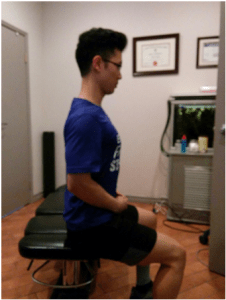
If you spend a lot of time sitting at home or at work, you may be putting yourself more at risk for head, neck, and shoulder pain! Over time with prolonged sitting, your head and neck will shift forward, along with forward rounding of your shoulders. This increases the amount of stress on your neck and shoulders. A excellent way to combat this abnormal position is pull your shoulders ‘BACK’ and ‘DOWN’. Start with holding this position for 15 seconds at a time, progressing up to 45 seconds.
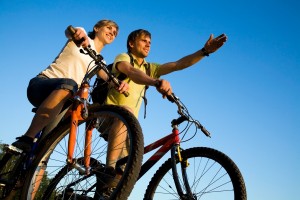
Many people are unable to find a consistent time to go to the gym or get the physical activity they need. This is not an excuse to not get any physical activity as there various ways to be physically active as we have access to “Free Gyms” on a daily occurrence. Instead of using an escalator or an elevator and use the stairs (also known as a “Free Gym”). Next time you buy groceries park farther away and carry a couple of the bags (the walk is a “Free Gym” and the groceries are “Free Weights”). If your dog is barking at you to go to the bathroom do not just open the back door and let him out, take him for a walk as he is really asking you to be his gym partner. There are dozens of daily choices we can make every day to make our lives a little more active and help fill in the times when life gets in our way of our regular exercise.


